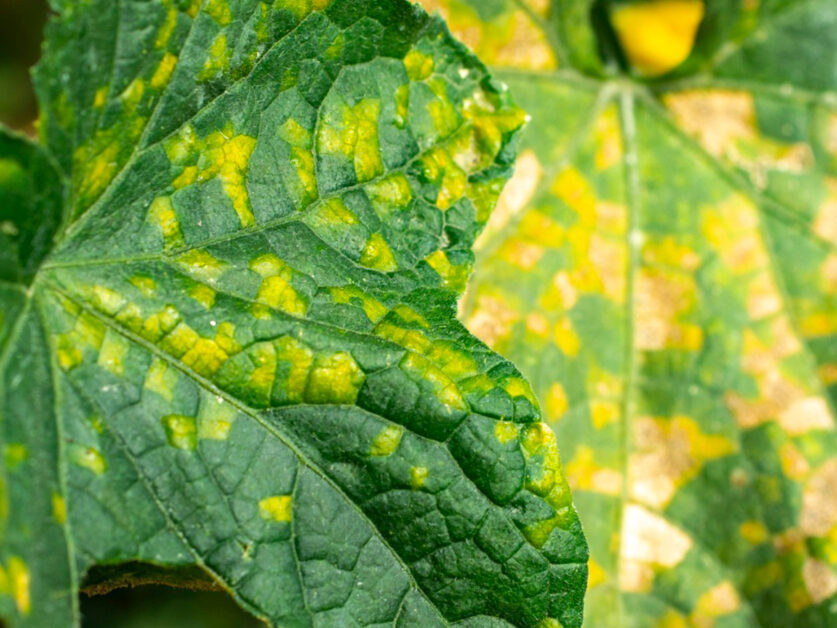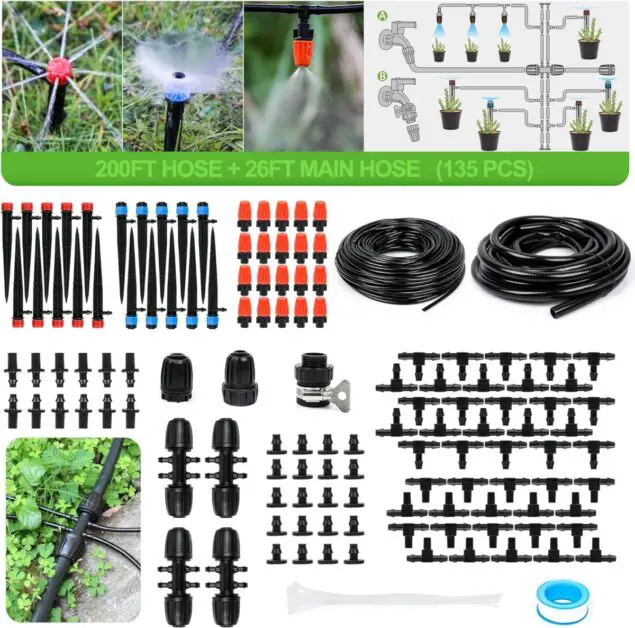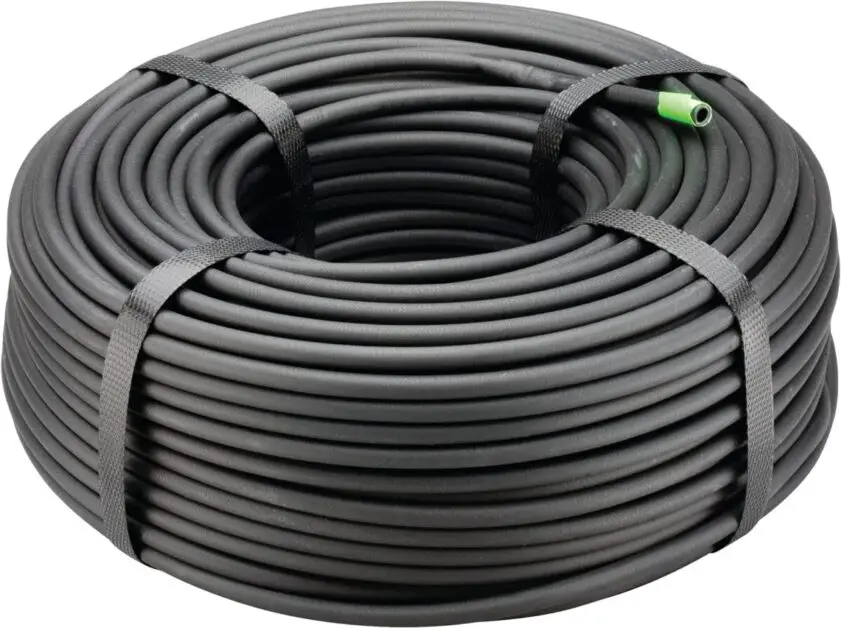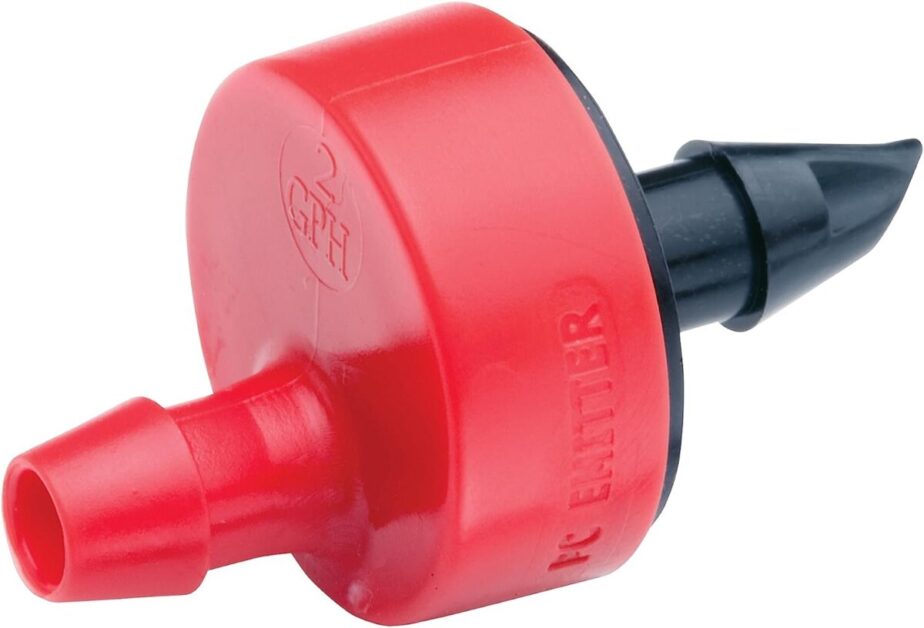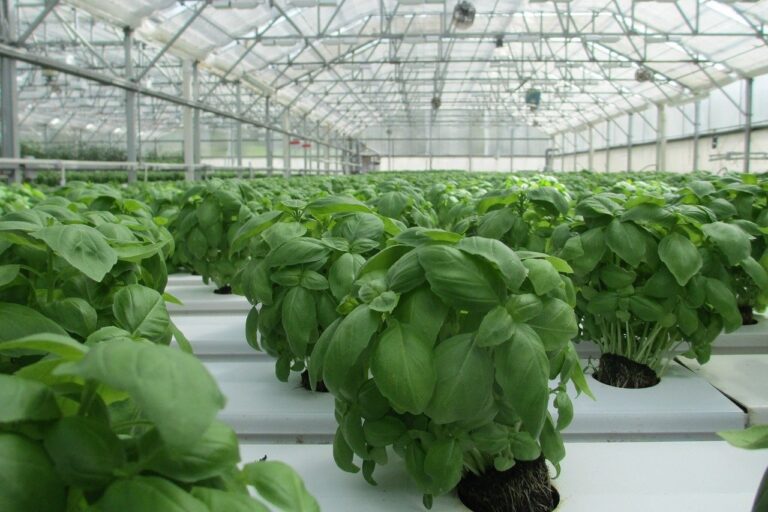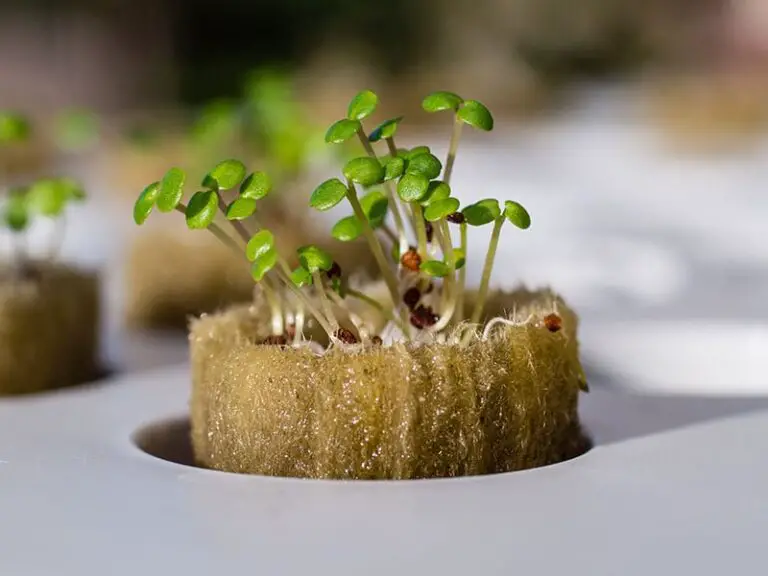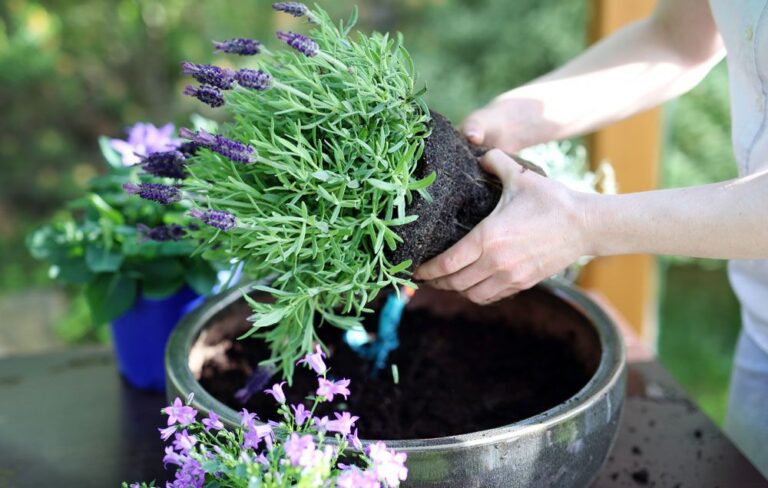Downy Mildew Control And Treatment
Are your plants falling victim to the dreaded downy mildew? This sneaky fungal disease can wreak havoc on your garden, causing unsightly damage and stunting growth. But fear not, fellow gardeners! With the right knowledge and proactive measures, you can take control of the situation and protect your precious plants.
Join us on a journey to explore effective downy mildew control and treatment strategies that will help you combat this common garden menace. From prevention to treatment, we’ve got you covered with expert advice and practical tips to keep your garden thriving. Say goodbye to downy mildew woes and hello to a healthy, vibrant garden oasis!
Table of Contents
Understanding Downy Mildew: A Threat to Plant Health
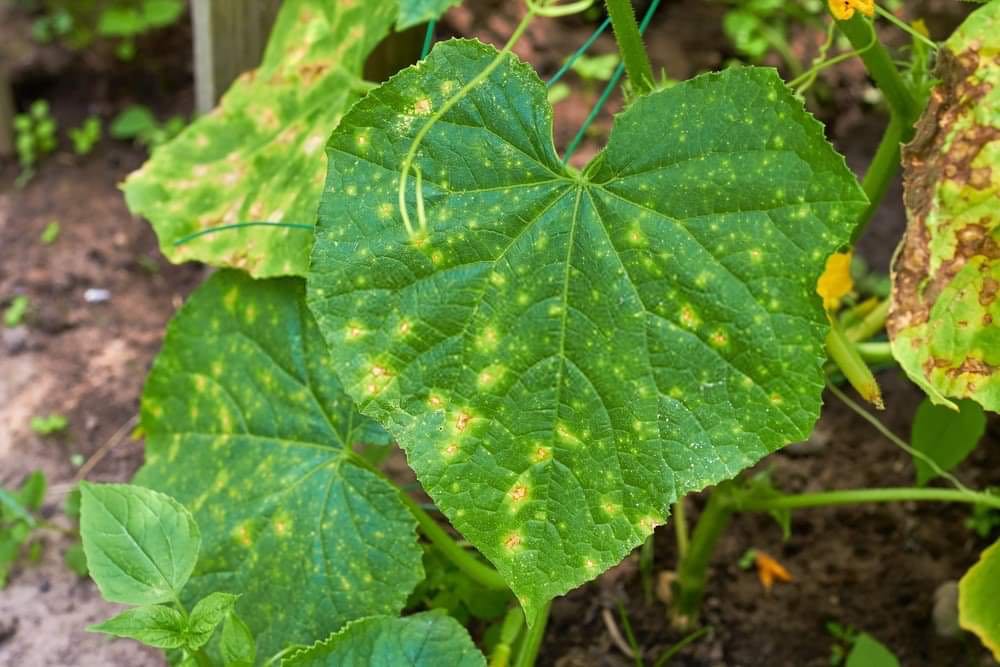
- What Is Downy Mildew?
- Downy mildew is a fungal disease that affects various crops like grapes, cucumbers, lettuce, and ornamental plants.
- It’s caused by fungi from the Peronosporaceae family, with different species targeting specific host plants.
- Cool and humid climates are where downy mildew thrives.
- Impact on Plants:
- Downy mildew spreads quickly.
- Symptoms include stunted growth, wilting, yellowing leaves, and even plant death in severe cases.
- Weakened plants become more vulnerable to other diseases and pests.
- Consequences:
- Reduced crop yields due to damaged plants.
- Economic losses for farmers and gardeners.
- Importance:
- Understanding downy mildew helps implement effective management strategies.
- Safeguarding plant health is crucial.
Remember, keeping an eye out for downy mildew and taking preventive measures can protect your plants! 🌱🌿
Identifying Downy Mildew: Symptoms and Signs

The Impact of Downy Mildew on Plant Growth and Yield
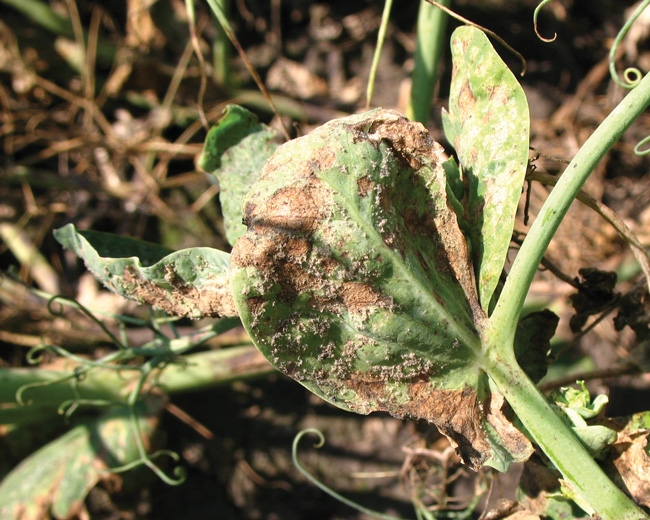
- Stunted Growth:
- Downy mildew disrupts photosynthesis in leaves.
- Reduced carbohydrate production affects overall plant growth.
- Growth rate can decrease by 20-40%.
- Leaf Area Loss:
- Lesions and chlorosis (yellowing) reduce leaf area.
- Leaf area may decrease by 30-50%.
- Yield Reduction:
- Impaired photosynthesis leads to decreased yield.
- Yield can drop by 30-60%.
- Quality Impact:
- Infected produce has visible lesions.
- Marketable quality decreases by 20-30%.
Remember, early detection and management are crucial to protect your plants! 🌱🌿
Environmental Factors Contributing to Downy Mildew Outbreaks

High humidity creates an ideal environment for downy mildew.
Moist air helps the pathogen (Peronospora) thrive.
Regions with frequent rainfall or irrigation are more susceptible.
Downy mildew thrives in moderate climates (50-80°F or 10-27°C).
These temps favor both plant growth and pathogen development.
Extreme cold or heat reduces the risk of outbreaks.
Some downy mildew strains adapt to various temperature ranges.
Managing the disease effectively can be challenging.
Monitor humidity levels and adjust as needed.
Consider optimal temperature ranges for susceptible plants.
Implement preventive measures to protect crops.
Remember, understanding these factors helps safeguard your plants! 🌱🌿
Preventative Measures: Maintaining Optimal Growing Conditions
To prevent the outbreak of downy mildew, which thrives in high humidity and moderate temperatures, gardeners should focus on creating unfavorable conditions for its growth. Here are some key strategies:
- Adequate Air Circulation: Essential for reducing humidity levels and inhibiting spore formation. Proper spacing of plants and avoiding overcrowding, especially in limited air movement areas like greenhouses, is crucial.
- Ventilation Techniques: Using fans or exhaust systems can help maintain optimal growing conditions by promoting air circulation.
- Temperature and Humidity Control: Regular monitoring and adjustment of temperature and humidity levels are vital preventive measures against downy mildew. Keeping these factors within recommended ranges strengthens plant defenses.
- Proper Irrigation Practices: Overwatering creates a damp environment ideal for fungal growth. Watering at the base or using drip irrigation systems minimizes moisture on leaves, while avoiding overhead watering reduces leaf wetness conducive to downy mildew development.
- Resistant Plant Varieties: Selecting resistant plant varieties is crucial in downy mildew control. Varieties like Imara and Beacon series for impatiens or Trifecta and Edisto 47 for cucumbers offer resistance to downy mildew.
By implementing these strategies consistently, gardeners can significantly reduce the risk of downy mildew outbreaks. However, it’s important to remember that these measures may need to be combined with other practices like fungicide treatments for comprehensive control of this destructive fungal disease.
I recently invested in a range of Rain Bird drip irrigation systems from Amazon to enhance the watering efficiency of my garden. The MIXC Greenhouse Irrigation Distribution System, Rain Bird T22-250S Irrigation Distribution Tubing, and Rain Bird SW20-30PS Irrigation Watering Drip System have collectively transformed my gardening experience. Setting up these systems was a breeze, thanks to clear instructions and user-friendly components.
Their suitability for small gardens like mine has been impressive, providing ample coverage for both my vegetable and flower beds. The efficiency of these drip irrigation systems stands out, as they deliver water directly to the roots, reducing water wastage and saving me time and effort.
The quality of the components, including timers and distribution equipment, has been top-notch, ensuring reliable performance. Since incorporating these systems into my garden routine, I have noticed a marked improvement in plant health and growth. Overall, the Rain Bird drip irrigation systems have not only simplified my watering regimen but also significantly enhanced the well-being of my plants, making them a valuable addition to any gardener looking to optimize their watering practices.
✅ Versatility: This irrigation kit comes with three types of sprayers, allowing users to choose from microdroplets, sprays, or regular watering modes based on their plants’ needs. Additionally, each water spray nozzle can be adjusted individually for customized watering.
✅ Water Savings: With the precision watering system provided by this kit, users can save up to 70% in water compared to traditional watering methods. This not only benefits the plants but also contributes to environmental conservation by reducing water waste.
✅ Ease of Installation: Installation of the irrigation system is straightforward and does not require digging or plumbing skills. The kit includes clear instructions, making it accessible for users of various skill levels.
✅ Coverage Area: Suitable for an area of 160 square feet, the kit includes 226FT of irrigation tubing, allowing users to water all their plants simultaneously.
❌ Leakage Issues: While the kit generally provides efficient watering, some users have reported instances of leakage. Ensuring proper installation and tight connections can help mitigate this issue.
❌ Durability Concerns: There have been occasional complaints about the durability of certain components, particularly with prolonged use. Users may need to monitor and potentially replace parts over time to maintain the system’s effectiveness.
❌ Connectivity Challenges: Connectivity may vary depending on individual setups and preferences. While some users have found the system easy to connect and configure, others have encountered difficulties, especially when attempting to connect multiple spray attachments on a single line.
❌ Limited Pressure Capacity: Users may experience limitations in pressure capacity, particularly when using multiple spray attachments on a single line. This can affect the system’s ability to provide consistent water distribution, especially over larger areas.
✅ Sturdy Construction: The tubing is described as very sturdy, which is essential for withstanding outdoor conditions and ensuring long-lasting performance.
✅ Versatility: This tubing is versatile and can be used as the main line in a small drip irrigation system or to branch off from larger tubing to individual micro-watering devices and plants.
✅ Textured Finish: The textured finish of the tubing improves handling, making connections faster and easier for users.
✅ Chemical Resistance: The tubing offers unmatched resistance to chemicals, which is crucial for maintaining its integrity over time, especially in agricultural settings where exposure to various chemicals is common.
✅ UV Damage Resistance: It is also highly resistant to UV damage, ensuring that it can withstand prolonged exposure to sunlight without deteriorating.
✅ Compatibility: Compatible with most brands of 1/4″ Barbed Fittings, Spot Watering Emitters, Micro-Bubblers, Misters, and Sprays, offering users flexibility in their irrigation setup.
✅ Pressure Rating: With a maximum pressure rating of 70 psi, this tubing exceeds competitors’ specifications, providing users with peace of mind regarding its performance under pressure.
✅ Easy Installation: Despite its rugged construction, users find it relatively easy to unroll and stake in gardens, flower beds, ground covers, or other landscaped areas.
❌ Limited Application: One user pointed out that this tubing is specifically designed for connecting to drip emitters or micro sprayers and may not be suitable for whole system setups, limiting its versatility in certain irrigation systems.
❌ Emitters: While the tubing itself is praised for its durability and reliability, some users mention that the emitters have to be cut off, which could be inconvenient for certain irrigation setups.
❌ Difficulties with High Pressure: In comparison to other types of tubing, this tubing may have difficulties with emitters blowing off under high pressures, potentially leading to water wastage or inefficient irrigation.
❌ Mounting Challenges: When mounted vertically, the tubing may droop over, requiring additional support or adjustment to maintain proper alignment, which could be an inconvenience for users seeking a more straightforward installation process.
✅ Various Pack Sizes and Flow Rates: Available in different pack sizes and flow rates (1 GPH, 2 GPH, 5 GPH, and 0.5 GPH), allowing users to choose the most suitable option based on their specific irrigation needs and preferences.
✅ Easy Installation: Users find these emitters relatively easy to install, especially with the barbed configuration, which eliminates the need for additional tools such as a punch tool. The sharp barb on the supply side ensures a secure connection, while the blunt barb on the exit side prevents the distribution tubing from coming off.
✅ Versatility: Suitable for a wide range of irrigation applications, including plant beds, gardens, landscapes, and greenhouse setups, providing users with versatility in their watering systems.
✅ Quality Construction: These emitters are praised for their good quality and low failure rate, making them a preferred choice for both residential and professional landscapers and irrigation contractors.
❌ Operational Failures: A few users have experienced operational failures, with some emitters not functioning as expected or failing to drip water altogether. This issue may require troubleshooting or replacement, adding inconvenience and potential additional costs.
❌ Limited Warranty: While the overall quality of these emitters is generally praised, there have been instances where users encountered defective units or failures, highlighting the importance of a comprehensive warranty policy for customer satisfaction and peace of mind.
❌ Price: Some users may find the price of these emitters relatively higher compared to similar products on the market, which could impact purchasing decisions, especially for those on a tight budget.
Selecting Resistant Varieties: A Key Strategy for Downy Mildew Control
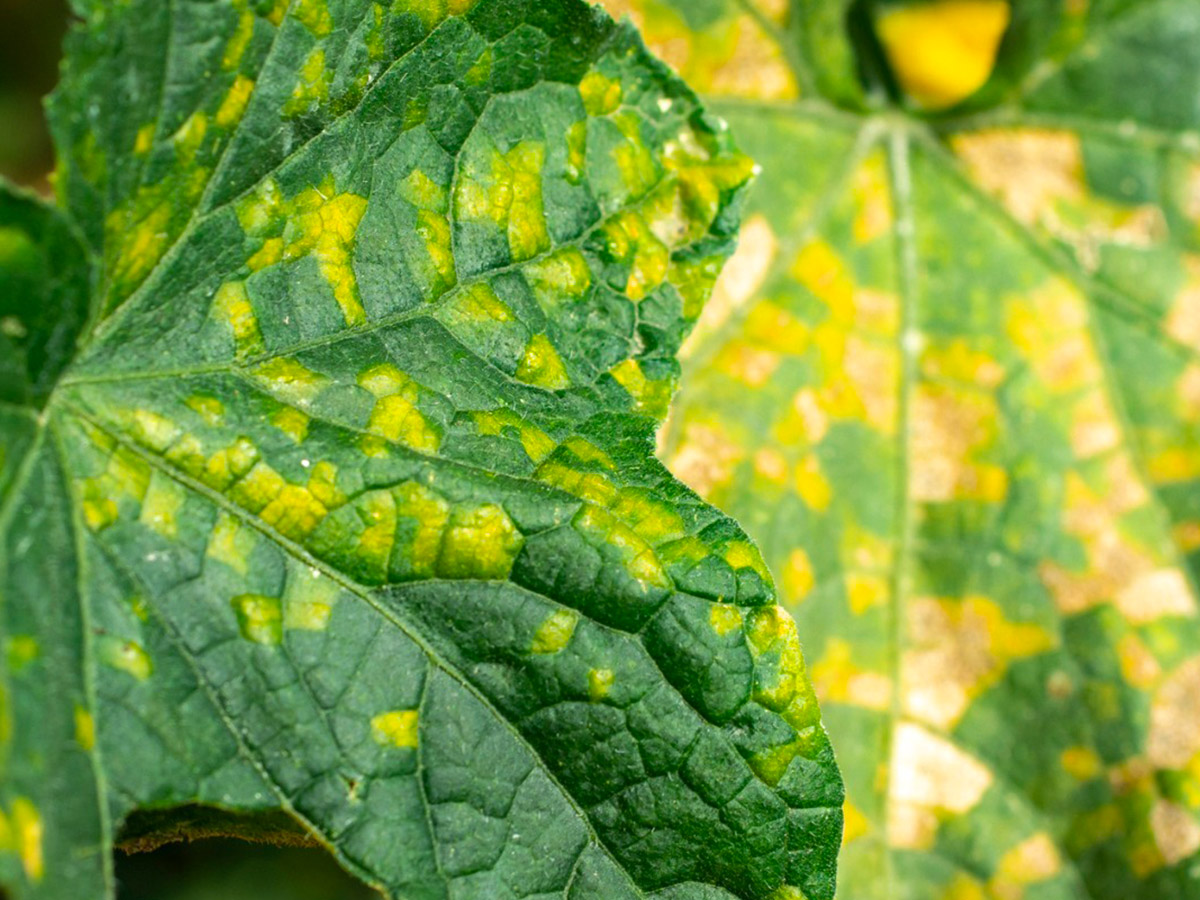
Cultural Practices to Minimize Downy Mildew Risk
Cultural practices play a crucial role in minimizing the risk of downy mildew in plants. By implementing proper cultural techniques, gardeners can create an environment that is less conducive to the development and spread of this devastating disease. By diversifying the types of plants grown, gardeners can hinder the continuous development and spread of this destructive disease.
The following table explains about the cultural practices to minimize downy mildew risk:
| Cultural Practice | Description | Quantitative Impact |
|---|---|---|
| 1. Proper Spacing | Maintain adequate spacing between plants for airflow. | Recommended spacing: 12-18 inches |
| 2. Crop Rotation | Rotate crops to reduce pathogen buildup in soil. | Rotation interval: 2-3 years |
| 3. Weed Control | Keep the area around crops free of weeds. | Weed removal frequency: Weekly |
| 4. Proper Irrigation | Avoid overhead watering to minimize humidity on foliage. | Drip irrigation usage: 2-3 times/week |
| 5. Timely Harvesting | Harvest crops promptly to prevent prolonged leaf wetness. | Harvest interval: Every 1-2 days |
| 6. Sanitation Practices | Clean tools and equipment to prevent pathogen spread. | Cleaning frequency: After each use |
| 7. Resistant Varieties | Select cultivars with resistance to downy mildew. | Resistant variety usage: 100% of crops |
| 8. Trellising and Staking | Support plants to improve air circulation and reduce humidity. | Trellis installation: Before planting |
| 9. Fungicide Applications | Apply fungicides preventively according to label instructions. | Fungicide usage frequency: Bi-weekly |
Sanitation and Hygiene: Essential Steps in Downy Mildew Management
/how-to-clean-garden-tools-4799140-10-014cca25a6094ee7881805c2ccddadb1.jpg)
Sanitation and hygiene are essential steps in managing downy mildew. The following points outline the key aspects of sanitation and hygiene in downy mildew management:
- Eliminate Overwintering Sites: Sanitation is crucial in controlling downy mildew. The spores overwinter in plant debris, so it’s essential to rake up and discard all leaves and plant debris after the growing season. For ornamental plants, ensure all leaves are off the mulch when they have finished falling.
- Quarantine New Plants: Before introducing new plants to the garden or greenhouse, quarantine them for a minimum of 14 days to reduce the risk of spreading plant diseases.
- Sanitary Practices: Maintain cleanliness in greenhouses, nurseries, and landscapes. Start with clean plant stock to reduce the occurrence of downy mildew, especially if plants can harbor asymptomatic, systemic infections. Remove infected plants as they are identified to reduce the amount of inoculum available for additional disease.
- Fungicide Applications: Use preventative fungicide applications according to label instructions. The frequency of application depends on the species and whether downy mildew has been found in your area or not. Fungicides are a preventative measure and may not control the disease once it is present. Rotate the fungicide used to prevent resistance.
By implementing these sanitation and hygiene practices, gardeners can significantly reduce the risk and impact of downy mildew outbreaks in their plants.
Effective Fungicides for Downy Mildew Control
When it comes to effective fungicides for downy mildew control, proper selection and application are crucial for successful management of this destructive disease.

- What Are Fungicides?
- Chemical compounds designed to inhibit fungal growth.
- Target fungal structures or metabolic pathways.
- Ultimately lead to the death of the pathogen.
- Effective Fungicides:
- Copper-based fungicides (e.g., copper sulfate, copper hydroxide):
- Interfere with the fungus cell membrane.
- Highly effective against downy mildew.
- Systemic fungicides (e.g., mefenoxam, metalaxyl):
- Absorbed by the plant and distributed throughout tissues.
- Provide long-lasting protection.
- Copper-based fungicides (e.g., copper sulfate, copper hydroxide):
- Variability:
- Different fungicides have varying modes of action.
- Efficacy may differ against different downy mildew strains.
- Expert Advice:
- Consult local agricultural extension services or professionals.
- Tailor fungicide recommendations to your specific region and crop.
Remember, choosing the right fungicide is essential for healthy plants! 🌱🍀
Hi-Yield Dusting Wettable Sulfur has proven to be an effective solution for controlling various fungal diseases and pests in my garden. I found it particularly useful for managing downy mildew, black spot, powdery mildew, leaf spot, and rusts on roses, shrubs, flowers, fruits, and vegetables. Its versatility allows for application as both a dust and a wettable spray, providing flexibility in addressing different plant types and disease severities.
Following the provided instructions, I applied it to all plant surfaces, ensuring thorough coverage. While some users experienced challenges with its dissolveability when mixed with water, I found it manageable and did not significantly affect its effectiveness. Despite minor availability issues and shipping delays reported by some users, I believe the long-lasting results and cost-effectiveness make it a valuable addition to any gardener’s toolkit. Overall, I would recommend Hi-Yield Dusting Wettable Sulfur for effective disease and pest control in gardens and yards.
- Effective control of diseases and insects including Thrips and Rust Mites.
- Versatile application as both a dust and a wettable spray.
- Highly effective in controlling Chiggers in yards or gardens.
- Coverage of 1,500 to 2,000 sq. ft. per 4 lbs.
- Easy application instructions provided.
- Dissolveability issues reported by some users, which may clog sprayers.
- Shipping delays experienced by some customers.
- Uncertainty about effectiveness in stopping certain pests, as reported by a user in South Florida.
- Limited availability in retail stores, necessitating online purchase for some customers.
Implementing Integrated Pest Management Strategies for Downy Mildew
- Early Detection: Regularly inspect plants in fields and greenhouses to catch downy mildew symptoms early. This allows for prompt action to prevent its spread.
- Cultural Practices:
- Crop Rotation: Change the type of crops planted in a specific area to disrupt the downy mildew’s life cycle.
- Moisture Control: Minimize excess moisture, as downy mildew thrives in damp conditions.
- Optimal Plant Density: Proper spacing between plants helps reduce humidity and prevents disease spread.
- Biological Controls:
- Beneficial Organisms: Introduce natural enemies like predatory mites or fungi. They prey on downy mildew spores, keeping their population in check.
- Reduced Chemical Use: By relying on these natural controls, we can minimize chemical interventions.
Remember to choose biological control agents that work well with your specific crop and downy mildew strain. This holistic approach promotes plant health while minimizing environmental impact! 🌱👍
Biological Control: Harnessing Nature’s Own Defenses Against Downy Mildew
Harnessing nature’s own defenses against Downy Mildew can be an effective and sustainable approach to managing this destructive plant disease. Biological control methods leverage the natural enemies of Downy Mildew, such as beneficial insects and microorganisms, to suppress the pathogen and reduce its impact on plants.

Action: Introduce these insects to the affected area to create a balanced ecosystem that limits the growth of both vectors and the pathogen.
Examples: Bacillus subtilis and Trichoderma spp.
Role: These microorganisms have antifungal properties.
Application: Use them as foliar sprays or incorporate them into the soil.
Effect: Suppress Downy Mildew and promote plant health.
Reduced Chemical Pesticides: Less reliance on chemical treatments.
Environmental Impact: Minimize harm to the environment.
Note: Biological control may take time; plan and implement carefully.
Remember, a holistic approach that combines biological control with other strategies is essential for effective Downy Mildew management! 🌿🐞
Timing and Application Techniques for Fungicide Treatments
The timing and application techniques for fungicide treatments are crucial factors in effectively managing downy mildew.
- Timing is Key: Apply fungicide at the disease’s most vulnerable stage for effective control.
- Weather Monitoring: Regularly monitor weather conditions and forecasts to pinpoint optimal application times.
- Thorough Coverage: Ensure complete coverage of plant surfaces by using equipment that generates fine droplets for maximum contact with foliage.
- Targeted Application: Direct fungicide application towards affected areas and surrounding healthy plants to halt disease spread.
- Choose Calm Conditions: Apply fungicides during calm weather to reduce drift and enhance product deposition on target plants.
Monitoring and Early Detection: A Vital Component of Downy Mildew Management
Monitoring and early detection play a crucial role in effectively managing downy mildew in plant cultivation. By regularly monitoring plants for early signs and symptoms of the disease, growers can take immediate action to prevent its spread and minimize crop damage.
- Visual Inspections:
- What: Closely examine plant foliage.
- Look For: Yellowing, browning, wilting, fuzzy patches, or white powdery coatings on leaves.
- Why: Detect early signs of downy mildew.
- Growth Patterns:
- Observe: Changes in plant growth (stunted or distorted).
- Significance: Early detection helps take timely action.
- Surveillance Methods:
- Environmental Sensors: Measure humidity and temperature.
- Purpose: Alert growers about favorable conditions for downy mildew.
- Lab Testing: Analyze plant tissue or soil samples.
- Advantage: Detect pathogen presence before visible symptoms.
- Environmental Sensors: Measure humidity and temperature.
Remember, proactive monitoring and early intervention are key to successful downy mildew management! 🌿🔍
Crop Rotation and Diversification: Breaking the Cycle of Downy Mildew
Crop rotation and diversification are crucial strategies in breaking the cycle of downy mildew and maintaining plant health.
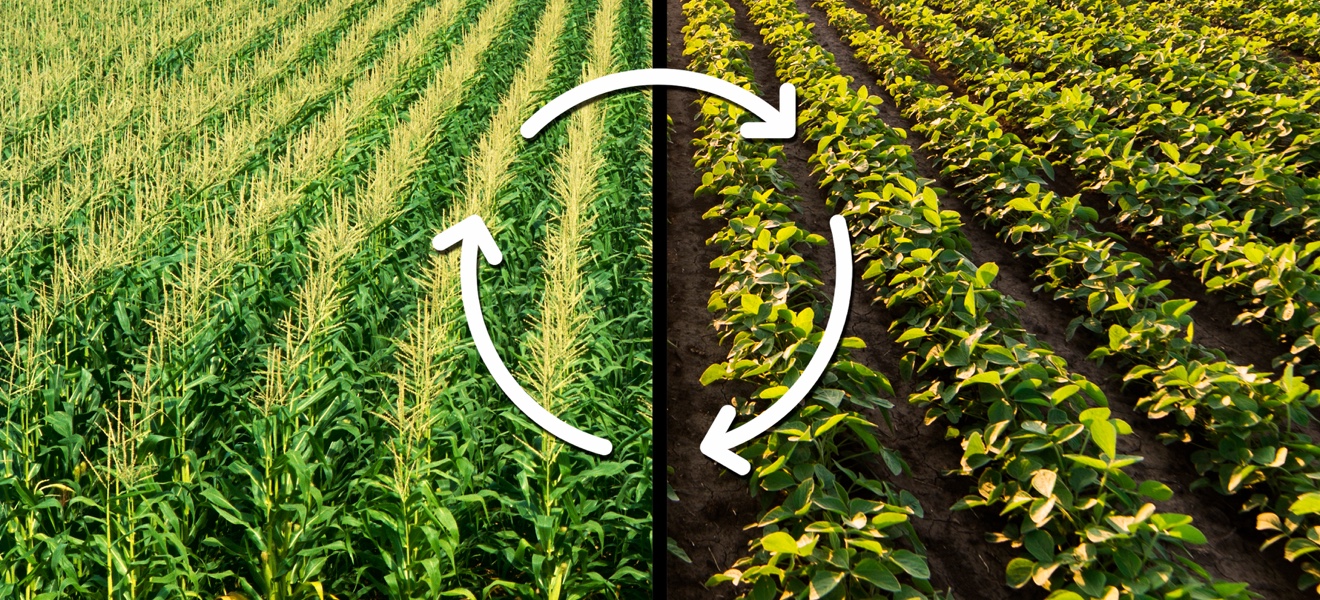
- Disrupting Pathogen Life Cycle: Crop rotation disrupts the life cycle of downy mildew pathogens, reducing their impact on susceptible plants.
- Systematic Planting Alternation: Alternate the planting of different crops in the same area across seasons or planting cycles.
- Preventing Pathogen Buildup: Crop rotation prevents the buildup of downy mildew pathogens in the soil by depriving them of their preferred host plants.
- Introducing Resistant Crops: Introduce crops resistant to downy mildew or less susceptible to infection to further minimize disease risk.
- Diversification for Resilience: Diversify the garden with a variety of crops to enhance overall ecosystem resilience, making it less favorable for downy mildew and other plant diseases to proliferate.
By implementing these practices, gardeners can create a healthier and more sustainable growing environment for their plants.
The Role of Fungicide Resistance in Downy Mildew Control
Fungicide resistance is an increasingly significant factor in the management of downy mildew, a common disease that affects many plant species.
- Fungicide Resistance Risk: Repeated use of fungicides can lead to the selection of resistant strains of downy mildew, reducing their effectiveness in disease control.
- Comprehensive Approach Needed: Addressing downy mildew requires a multifaceted strategy due to the emergence of resistant strains.
- Consequences of Resistance: Fungicide resistance jeopardizes plant health and agricultural productivity.
- Rapid Spread: Once resistance develops, it can quickly spread, compromising the efficacy of previously effective fungicides.
- Increased Costs: Growers may need to apply fungicides more frequently or use stronger formulations, resulting in higher costs.
- Environmental Concerns: Resorting to potent fungicides can pose environmental risks, necessitating careful management strategies.
To mitigate the development of resistance, it is crucial to adopt integrated pest management strategies that minimize reliance on fungicides and promote sustainable control measures.
Successful Downy Mildew Management: A Comprehensive Approach
Watch video for more information:
FAQ
What is downy mildew?
Downy mildew is a fungal disease that poses a threat to the health of plants.
How can I identify the symptoms and signs of downy mildew?
Look out for yellow or pale green spots on the upper surface of leaves, and a fluffy, white or grayish growth on the underside of leaves.
How does downy mildew impact plant growth and yield?
Downy mildew can weaken plants, stunt their growth, and reduce the quality and quantity of yield.
What environmental factors contribute to outbreaks of downy mildew?
Factors such as high humidity, cool temperatures, and rainy weather create favorable conditions for downy mildew outbreaks.
What preventive measures can I take to maintain optimal growing conditions and prevent downy mildew?
Some preventive measures include ensuring good air circulation, avoiding overhead irrigation, and practicing proper sanitation.
How can I select resistant varieties to control downy mildew?
Choosing plant varieties that have been bred to be resistant to downy mildew is a key strategy in its control.
What cultural practices can I adopt to minimize the risk of downy mildew?
Practices like spacing plants properly, avoiding overcrowding, and removing infected plants can help minimize the risk of downy mildew.
Why is sanitation and hygiene important in downy mildew management?
Proper sanitation and hygiene, such as cleaning tools and removing infected plant debris, help prevent the spread and recurrence of downy mildew.
Why Is Sanitation And Hygiene Important In Downy Mildew Management?
Proper sanitation and hygiene, such as cleaning tools and removing infected plant debris, help prevent the spread and recurrence of downy mildew.
Are there effective fungicides available for downy mildew control?
Yes, there are fungicides that can be used effectively to control downy mildew. Consult with a professional to determine the appropriate fungicide for your specific situation.
What is integrated pest management, and how can it be implemented for downy mildew control?
Integrated pest management is a holistic approach that combines various control methods, such as cultural practices, biological control, and judicious use of pesticides, to manage downy mildew effectively.
Can biological control methods be used against downy mildew?
Yes, biological control methods can be employed to harness nature’s own defenses against downy mildew. These methods involve using beneficial organisms or natural compounds to suppress the disease.
What are the recommended timing and application techniques for fungicide treatments?
It is crucial to apply fungicides at the right time and using proper application techniques as recommended by experts or product labels for effective control of downy mildew.
How does crop rotation and diversification help in breaking the cycle of downy mildew?
Crop rotation and diversification prevent the buildup of downy mildew pathogens in the soil, reducing the risk of recurrence.
Can fungicide resistance impact downy mildew control?
Yes, the development of fungicide resistance in downy mildew pathogens can reduce the effectiveness of fungicides. It is important to monitor for resistance and use appropriate management strategies to address it.

Studied Agricultural Engineering-Plant Protection at University of California, Davis.
Head of Content writing team at Southelmontehydroponics.com

